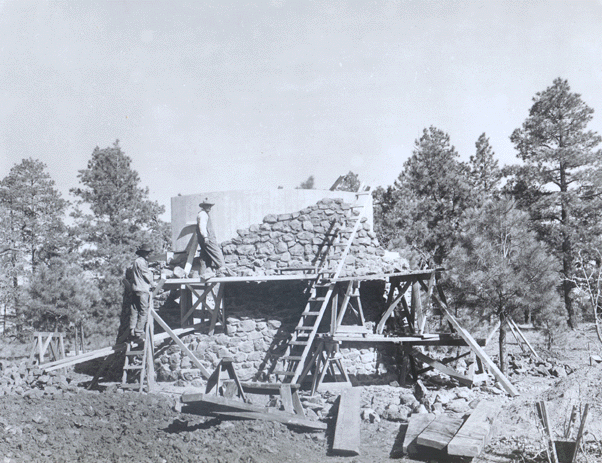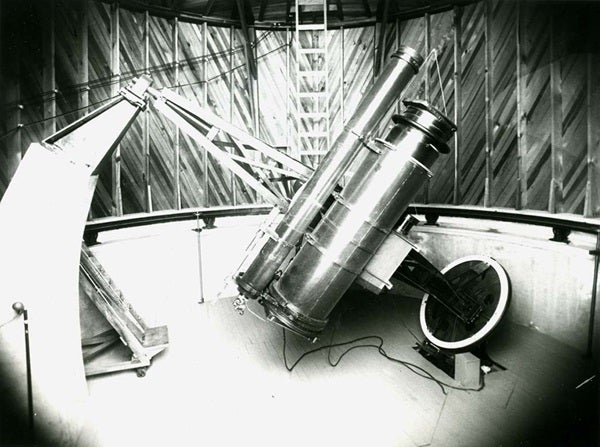Percival Lowell had initiated his search for a theoretical ninth planet in 1905. Over the ensuing decade, he and his team would try several different instruments during the on again/off again planet hunt. These included telescopes ranging in diameter from 5 to 42 inches and which generally proved inadequate for the work.
Lowell died in 1916 and the quest for Planet X ceased. Eleven years later, however, observatory sole trustee Roger Putnam worked with Director V. M. Slipher to recommence the search, devising a plan of attack and lining up the appropriate equipment and staff to carry out a program that would prove more systematic than the past attempts.
Percival’s brother Abbott Lawrence Lowell, then serving as president of Harvard University, donated $10,000 to Lowell Observatory for building a facility specifically designed for the search. With this money, the observatory paid the Alvan Clark & Sons firm — the company that had built Lowell’s 24-inch refractor in 1896 — to fashion a triplet lens from glass purchased by Putnam’s predecessor as sole trustee, Guy Lowell, from the estate of optician Joel Metcalf.
The remaining $6,000 would go toward telescope mount and dome construction, which commenced in early 1928. For the dome, Lowell machinist Stanley Sykes used the same basic design his brother Godfrey had devised for the observatory’s 24-inch Clark dome back in 1896. Staff handyman Ramon Vielma built the stationary wall of the dome, capping it with native volcanic rock gathered from the observatory grounds. Pattern maker Edward C. Mills, who had crafted the staircases in the observatory’s Rotunda Library, built the rotating portion of the dome of wooden patterns that are now preserved in Lowell’s Putnam Collection Center.
Sykes and his son built a 14-foot-long cross-axis mount and installed a governor clock for telescope tracking. The lens arrived February 11, 1929, and staff needed several days to install the 13-inch-diameter triplet into the telescope tube. The instrument had a focal length of 66.5 inches and held 14 by 17 inch glass plates with a 12 by 15 degree field of view, perfect for surveying the sky.
Staff exposed the first photographic plates February 16 and, after various adjustments, began the systematic search for Planet X on April 6. Clyde Tombaugh, who began working at the observatory January 15, was soon trained to not only make the plates but also examine them. On February 18, 1930, Tombaugh discovered Pluto on plates taken January 23 and 29.
Twenty-five years — complete with a few failed search attempts — had passed between the time Lowell began searching for a planet and Tombaugh discovering Pluto. This is almost exactly the same amount of time — along with comparable failed attempts — between a 1989 gathering of the so-called Pluto Underground (this consisted of about a dozen Pluto researchers who kick-started an effort to send a spacecraft to Pluto) and this year’s New Horizons arrival.
Postscript: Tombaugh continued searching for other planets until 1942, covering about 75 percent of the sky. The 13-inch telescope was later used to study asteroids and comets and search for small natural satellites of Earth and the Moon. It was also used for one of the most important yet least known projects at Lowell, a proper motion survey of stars. The telescope was moved to Lowell’s Anderson Mesa dark-sky site in 1970. After the proper motion survey ended in 1980, the instrument was again used for asteroid studies and finally returned to its original dome on the main Lowell campus August 11, 1993. Since then, tens of thousands of visitors each year see the telescope used to discover Pluto and hear the compelling story behind this historic instrument.
Kevin Schindler is a science writer at Lowell Observatory in Flagstaff, Arizona.











